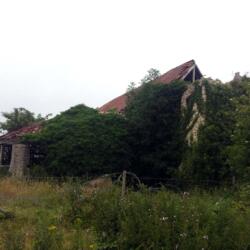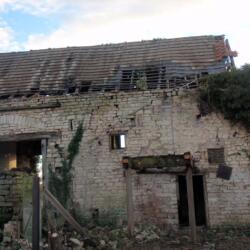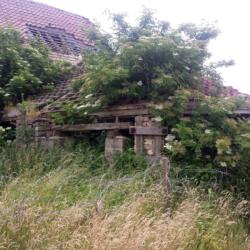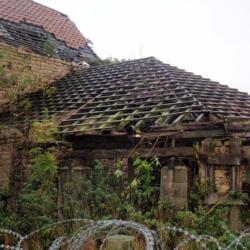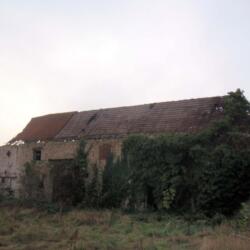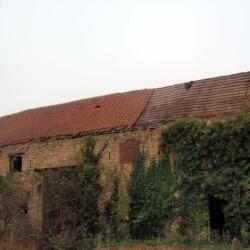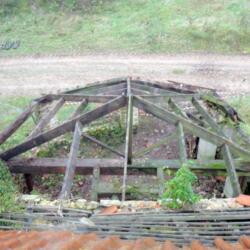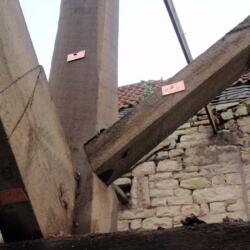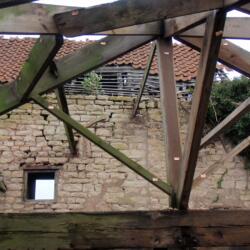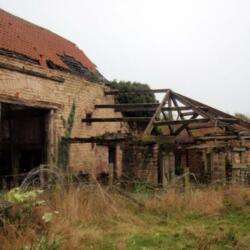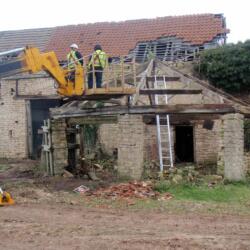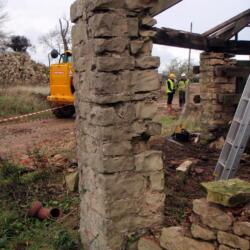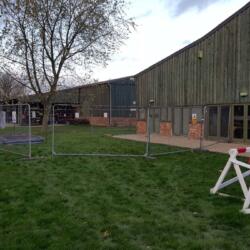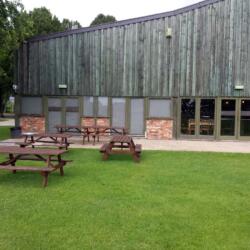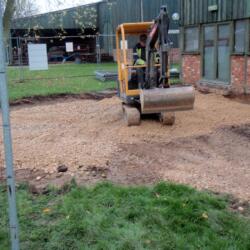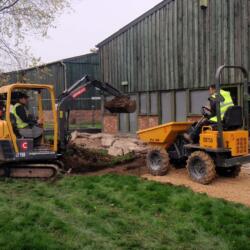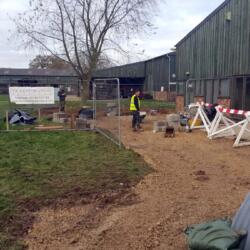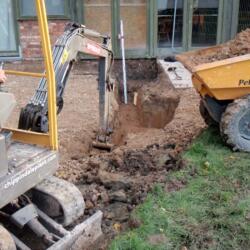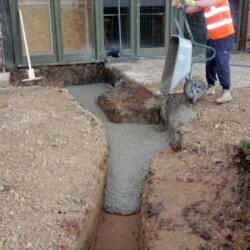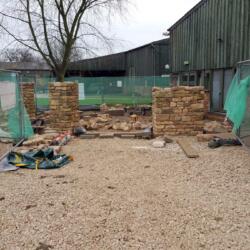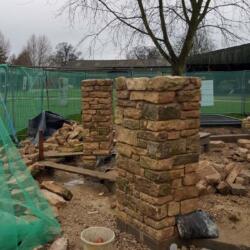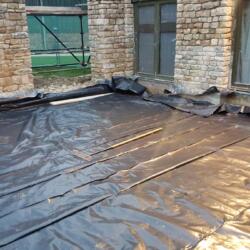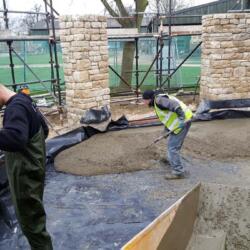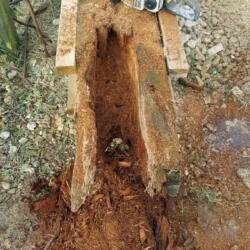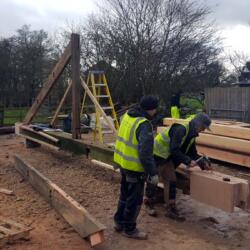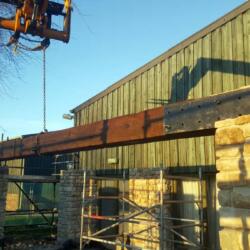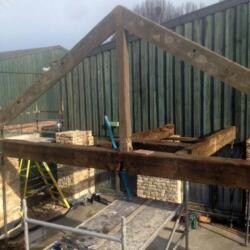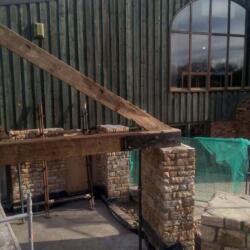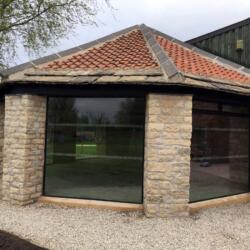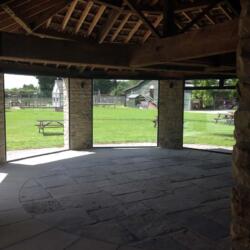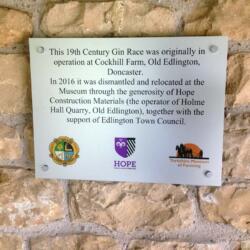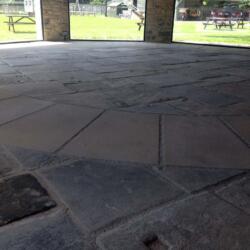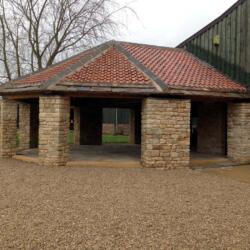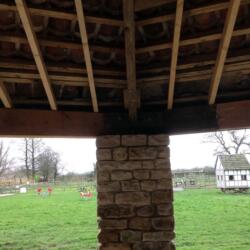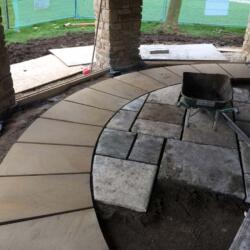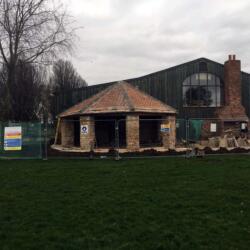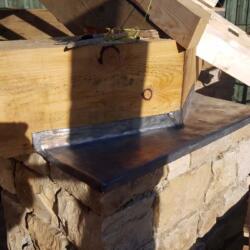 UK Restoration Services were contracted to relocate the Gin Race from Former Cockhill Farm near Doncaster, land now within the Holme Hall Quarry, to the Yorkshire Museum of Farming in Murton, York. The Quarry that owned the land were due to take up the area and most of the former farmland had already been cleared and levelled. Only one barn and the attached timber framed masonry Gin Race Building remained.
UK Restoration Services were contracted to relocate the Gin Race from Former Cockhill Farm near Doncaster, land now within the Holme Hall Quarry, to the Yorkshire Museum of Farming in Murton, York. The Quarry that owned the land were due to take up the area and most of the former farmland had already been cleared and levelled. Only one barn and the attached timber framed masonry Gin Race Building remained.
A new home had been fittingly found for the Gin Race at the Museum of Farming in York. Our task was to carefully take down the Gin Race building and reconstruct it at the Museum using the same materials. The remainder of the barn was then to be demolished and the materials from the external walls and the roof structure were to be retained by the Employer for reuse elsewhere.
At the Quarry, the roof tiles, timbers and stone were carefully taken down ensuring the fragile materials were not damaged. The roof tiles were removed by hand and a strategic section by section approach was used for the rest of the Gin Race building. The stone sections were broken down using plant machinery. The Gin Race had vegetation growing inside its structure and our team carefully removed this as they took down the structure of the building. Once the building had been taken down the site was cleared.
External ecologists conducted a watching brief during the demolition works. The watching brief was required to ensure any roosting bats, who are fully protected under the Wildlife and Countryside Act of 1981, were not disturbed or injured. No evidence of bats was found at the site.
At the museum where the Gin Race was to be reconstructed, excavation, concrete and drainage works were carried out. We located the existing drainage run. Flexible collars were cut onto the drain where it was to pass through the new foundations of the re-erected building. The pipe was exposed and encased with concrete. The existing manhole was capped, and the frame and cover set aside for reuse. A new inspection chamber was formed, a new land drain was constructed around the perimeter of the new building and connected to existing drainage. Foundations were excavated to allow for the construction of the floor which was to be the same level as that of the existing Museum building.
Once the foundations had been prepared our team constructed the masonry using salvaged limestone blocks.
We found that the salvaged timbers that were to be used for roof construction had decayed more than was expected. Our team sourced matching timber for the rafters and timber structure.
The rafters were fixed, and new double battens and pantiles laid. Unfortunately, none of the existing, salvaged ridge tiles were deemed re-usable so we procured new ridge tiles to match the specification. Reclaimed slates were laid, and lead flashing installed.
The floor was made up with stones salvaged from the original barn and matching reclaimed slates. A new stone circle was created through reclaimed slate and delivered to site.
The Museum wanted to ensure that wheelchair users could access the reconstructed Gin Race building. A wider access door was created. A specialist subcontractor completed the glazing for the windows and doors. Doors were fitted with security locks and ‘Push/Pull’ stainless steel rail handles.
Specialist contractors completed the electrical work.
The timbers were cleaned, two coats of oil glaze were applied to externally exposed structural timbers and an application of transparent permeable coating was applied to the stone flag floor. The plaster walls were painted.
At the end of the project an open day was held at the Museum of Farming in York. Local dignitaries and stakeholders were shown the reconstructed Gin Race.
